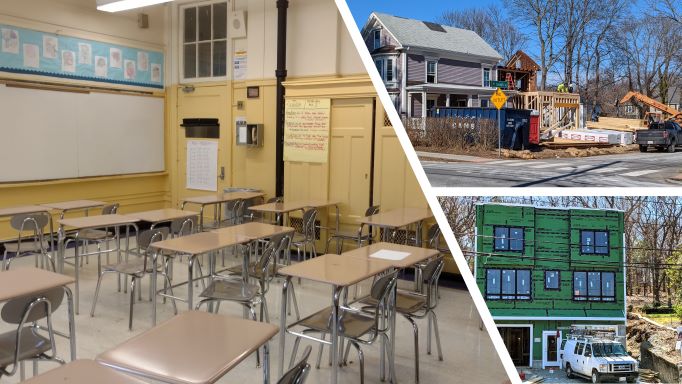To: Planning Board and Planning Director
From: Joe Pato and Rod Cole, members of the LPS Enrollment Working Group
As the community considers proposed zoning amendments to comply with the new multifamily zoning requirement for MBTA communities in the Zoning Act (MGL Chapter 40A Section 3A), some residents have raised concerns about the potential effects on schools and municipal resources and finances. The Lexington Public Schools (LPS) Enrollment Working Group (EWG) has studied the effects of housing on enrollment for much of the past decade. This note does not advocate for or against the proposed changes. Instead, it seeks to provide context for evaluating zoning changes in Lexington.
It is important to note that these observations reflect demographic and migration patterns in Lexington from the 1950s through the beginning of the Covid pandemic. While these are indicative of likely future trends, unforeseen factors such as changes in the national or local economies or changes to community behavior such as were seen during the pandemic may lead to different results.
- The number of students enrolling in LPS is not directly correlated with the number of housing units in Lexington. Peak enrollment occurred at the end of the 1960s with over 9,600 students. The Town population was roughly the same then as now (31,886 in 1970) but the number of housing units and households in 1970 was far fewer. Since that time enrollment has both fallen precipitously and increased all while the housing stock has grown. Many factors beyond the availability of housing units affect enrollment changes.
- The percentage of households with children attending LPS has been increasing slightly over the past two decades and was 37% in 2017. The number of LPS students per household, however, has been decreasing. The 2017 average was 1.6 students in those households that had any LPS students.
- New housing opportunities in Lexington do not necessarily lead to new students entering LPS. Contrary to popular belief, every new housing unit does not yield new students in LPS. Our 2017 study of the 5-year impact on enrollment of homes and condominiums sold 2007-2015 indicates that only about 50% of sales lead to the dwelling having a new student attend LPS within 5 years after the sale.
- The location of new development is significant. Growth that is spread across the community broadly is easier to absorb into the school system than the same growth concentrated in one or two locations. This is especially true for growth affecting elementary school students and to a lesser extent the middle school population.
- The timing of growth is significant. Growth occurring through broad overlay district zoning that covers many smaller individual properties is more likely to lead to a gradual increase in housing density than similar districts composed of a small number of large properties. Gradual increases in housing density allow the school system to adjust to enrollment changes more easily.
Thank you for this opportunity to provide feedback on the effects of housing on student enrollment in Lexington public schools.
– Joe Pato and Rod Cole, members of the Enrollment Working Group
The Enrollment Working Group was chartered in 2014 by the LPS School Superintendent to develop five-year enrollment forecasts for the elementary grades (K-5), the middle school grades (6-8) and for the high-school grades (9-12). In 2016 the group was reconstituted as an advisory group assisting school department staff. Details on the methodologies used by the EWG can be found in its 2014 Five-year Enrollment Forecast report.
EWG information is available from the LPS reports page https://sites.google.com/lexingtonma.org/lexresarchreports/commonly-requested-reports-publications under the category “enrollment”

